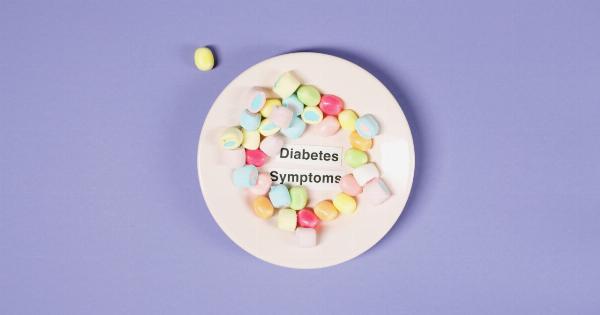Bacterial vaginosis (BV) is a common vaginal infection that occurs when there is an imbalance in the vaginal bacteria. While many women with BV may not experience any symptoms, it can lead to pregnancy complications if left untreated.
One such complication is an increased risk of miscarriage.
What is bacterial vaginosis?
Bacterial vaginosis is a condition characterized by an overgrowth of certain types of bacteria in the vagina. Normally, the vagina has a delicate balance of bacteria, including both good and harmful bacteria.
However, when there is an overgrowth of harmful bacteria, it disrupts this balance and can lead to various symptoms and complications.
How does bacterial vaginosis increase the risk of miscarriage?
While the exact mechanisms are not fully understood, several factors associated with bacterial vaginosis may contribute to an increased risk of miscarriage. These include:.
1. Inflammation and infection:
Bacterial vaginosis causes inflammation and increases the chance of vaginal infections. This inflammation and infection can affect the developing fetus, potentially leading to complications such as a miscarriage.
2. Impact on the cervical mucus:
Bacterial vaginosis can alter the consistency and quality of the cervical mucus. This mucus plays an important role in facilitating the passage of sperm and supporting a healthy pregnancy.
Any disturbance in this process can lead to difficulties in conceiving or maintaining a healthy pregnancy.
3. Preterm labor:
Bacterial vaginosis has been linked to an increased risk of preterm labor. Preterm labor refers to the onset of labor before 37 weeks of pregnancy.
In some cases, preterm labor can lead to miscarriage or other complications that can threaten the health of both the mother and the baby.
4. Inflammation of the placenta:
Bacterial vaginosis has been associated with placental inflammation. This inflammation can interfere with the normal functioning of the placenta, which provides essential nutrients and oxygen to the developing fetus.
An unhealthy placenta can lead to pregnancy complications, including an increased risk of miscarriage.
5. Risk of other genital tract infections:
Women with bacterial vaginosis are more susceptible to other genital tract infections, such as Chlamydia and gonorrhea. These infections can have detrimental effects on pregnancy and, in some cases, increase the risk of miscarriage.
Who is most at risk of experiencing a miscarriage due to bacterial vaginosis?
While bacterial vaginosis can occur in any woman, certain individuals may have a higher risk of experiencing a miscarriage due to this condition. Factors that may increase the risk include:.
1. Previous history of miscarriage or pregnancy complications:
Women who have previously experienced miscarriages or other pregnancy complications may be more susceptible to the negative effects of bacterial vaginosis.
It is essential for these individuals to seek proper medical care and closely monitor their vaginal health during subsequent pregnancies.
2. Poor personal hygiene:
Practicing good personal hygiene, including regular washing of the genital area, is important in preventing the overgrowth of harmful bacteria.
Poor personal hygiene may contribute to an increased risk of developing bacterial vaginosis, which can subsequently lead to a higher risk of miscarriage.
3. Multiple sexual partners:
Engaging in sexual activity with multiple partners can increase the risk of developing bacterial vaginosis.
This is because the exchange of bacteria during sexual intercourse can disrupt the natural balance of vaginal flora, making it easier for harmful bacteria to overgrow.
4. Use of certain feminine hygiene products:
Certain feminine hygiene products, such as scented soaps, douches, and vaginal sprays, can irritate the delicate vaginal tissues and disrupt the natural balance of bacteria.
This disruption can lead to bacterial vaginosis and an increased risk of miscarriage.
5. Smoking:
Smoking is known to increase the risk of various pregnancy complications, including miscarriage. It can also alter the vaginal environment, making it more conducive to the growth of harmful bacteria.
Smoking cessation is highly recommended for women planning a pregnancy or already pregnant.
Conclusion
Bacterial vaginosis is a common vaginal infection that can increase the risk of miscarriage if left untreated. Understanding the factors that contribute to this risk is crucial for healthcare providers and women planning a pregnancy.
By addressing these risk factors and seeking appropriate medical care, the likelihood of a healthy pregnancy can be improved.






























